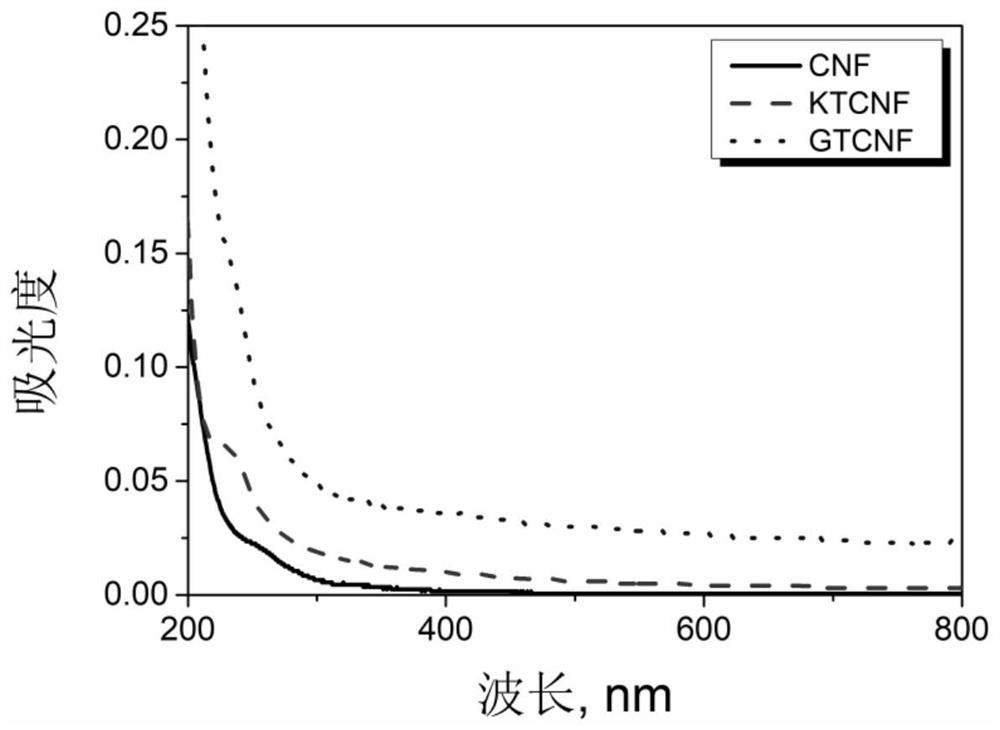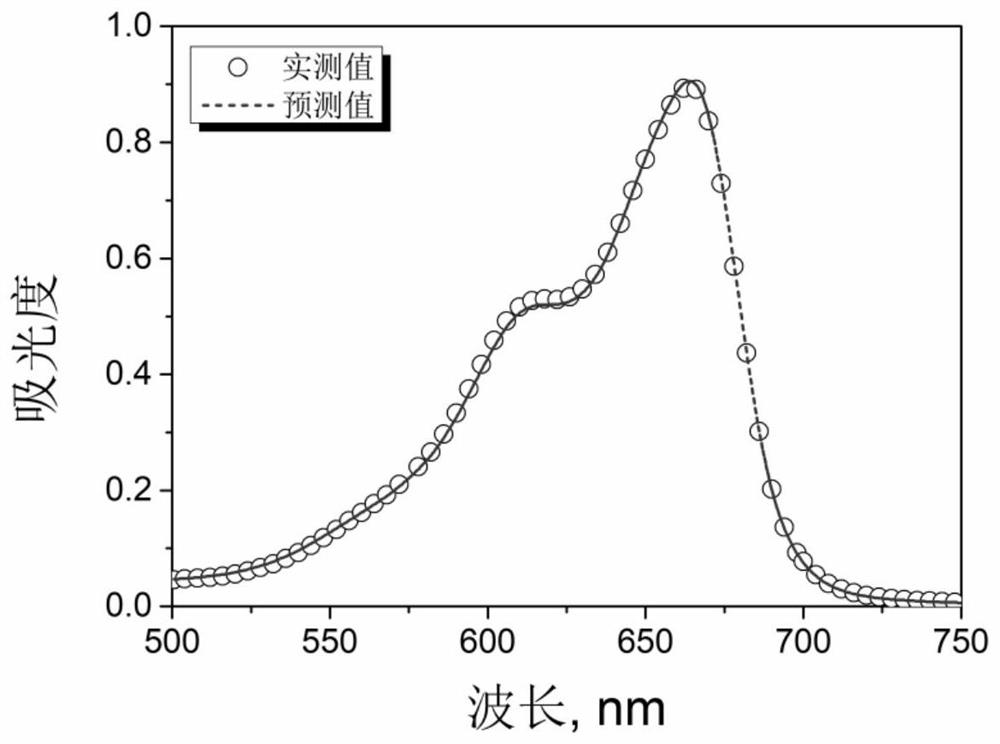A method for determining the carboxyl content of nanocellulose by multi-wavelength spectroscopy
A kind of nanocellulose and spectroscopic technology, which is applied in the field of multi-wavelength spectroscopic technology to determine the carboxyl group content of nanocellulose, can solve problems such as impossible component content, and achieve the effects of simple and fast experimental operation and objective and accurate test results.
- Summary
- Abstract
- Description
- Claims
- Application Information
AI Technical Summary
Problems solved by technology
Method used
Image
Examples
Embodiment 1
[0041] This embodiment measures the carboxyl content of nanocellulose prepared under different oxidation processes, and the specific determination steps are as follows:
[0042] (1) Using deionized water as a blank, scan the full spectrum with an ultraviolet-visible spectrophotometer (UV-Vis), and correct the absorbance at 0 point.
[0043] (2) After mixing 5 mL of MB aqueous solution with a concentration of 31.3 μmol / L and 5 mL of deionized water, the pure spectrum of methylene blue was obtained by UV-Vis scanning①.
[0044] (3) After mixing the nanocellulose aqueous solution with a concentration of 3 mg / L and an equal volume of deionized water, scan its full spectrum with UV-Vis to obtain the spectrogram of the nanocellulose aqueous solution ②;
[0045] (4) After mixing the MB aqueous solution with a volume of 5mL and a concentration of 31.3μmol / L and the aqueous solution of nanocellulose with a volume of 5mL and a concentration of 168mg / L, after UV-Vis scanning, the carboxyl ...
PUM
 Login to View More
Login to View More Abstract
Description
Claims
Application Information
 Login to View More
Login to View More - R&D
- Intellectual Property
- Life Sciences
- Materials
- Tech Scout
- Unparalleled Data Quality
- Higher Quality Content
- 60% Fewer Hallucinations
Browse by: Latest US Patents, China's latest patents, Technical Efficacy Thesaurus, Application Domain, Technology Topic, Popular Technical Reports.
© 2025 PatSnap. All rights reserved.Legal|Privacy policy|Modern Slavery Act Transparency Statement|Sitemap|About US| Contact US: help@patsnap.com



